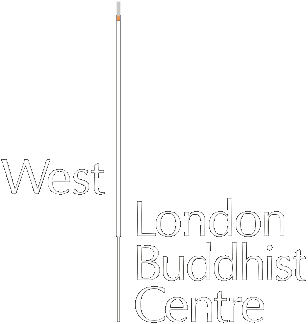Mindful Thoughts
Vajradaka is one of the most experienced meditation teachers in Triratna and is continuously developing fresh approaches to maintaining and developing a vibrant meditation practice. He is known for easy to relate to ways of teaching which come across as clear, practical and relevant. He is a regular guest teacher on Dharma Night.
Mindful Thoughts
One of the major functions of the mind is the way that it thinks. Mindful thinking is essentially progressive and helpful. Here in brief are a few of the characteristics of the way that thinking operates in mindfulness.
Some of the characteristics of mindful thinking
Making a space without multitasking
When you are practising periods of mindfulness it is good to consciously decide that you are going to have one area of engagement rather than multitask . This allows you to be totally involved and immersed in the topic or project which you are involved in. This is thinking all in one specific area. All your thinking will be about that project or area of engagement in a quiet back of the mind way. The characteristic of this kind of thinking is clear and relevant. We are aiming to let go of and divert from the kind of thinking that is an endless torrent of thought which fills all your mental space.
Inquisitive or curious thought
Curious thought includes simple questions which point your awareness in the direction of being more sensitive and aware of what is actually happening but not necessarily conscious at the moment. You ask the questions in your mind in an open, unloaded way without anticipation or bias. e.g. ‘What’s here’? Or ‘How does it feel’? Once you have asked the question, make space for letting conclusions arise. Another part of the skill-set is the tone. When the thought is a question like ‘how do I feel?’ or ‘what is here?’ The tone of thought conveys an openness in the question. A general guideline is that the thought is quiet, clear and gentle. It even has the quality of kindness in it’s tone.
Descriptive thought
This is part of the skill-set of asking yourself questions. A useful part of this skill-set is having a sense of your body, especially the front of the torso when you ask for a description of what is happening or how you are. The most simple form is ‘ what is a description of this’? When an answering word or phrase arises check ‘Does this fit’?
Solution based thinking
This kind of thinking has to do with an awareness of something which needs attention. It occurs out of the kind of question which asks ‘What would help here’? Be open to short clear answers.
Directive thinking
Effectively this is where your thinking points you in a direction or tells you to do something but in a quiet and gentle way. The more specific and simple the directive is the better. e.g. ‘Settle’. Ideally avoid directives like ‘don’t do that’ or double negatives like ‘don’t not do that’, they are too indirect so the mind has to think too much to work out what you mean.
Keeping a thread of thought
Mindful thought stays on topic and can hold both a thread of continuity on a particular topic and it can also take in the complexity of what is happening. An important characteristic of awareness of thought in mindfulness is to notice when your mind jumps off-topic randomly so that you lose your thread. If you’re aware of that moment use thought to bring you back to your area of engagement.
An expression of this in discussion is noticing when you don’t finish your sentences. Decide to be aware of whether you finish your sentences and if you don’t finish them quite a bit then consciously decide to come back to the topic and finish it. Doing this in conversation helps you train your thinking to stay on topic.
Preparatory thinking
Being mindful is mainly about being present as things happen, however planning and forethought play a part in mindfulness. Think about what you may need in a forthcoming situation ,or that you are going to be alert to specific ‘triggers’ which could set you off in a way you don’t like and want to avoid.
Learning the lessons of the past
This is the process of questioning whether something you do regularly as a matter of course actually helps you or not. When a habitual reaction in certain situations keeps occurring assess it in terms of its effects. Then make a clear directive to be alert for that tendency and guard against letting it ‘just happen’.
Thinking and listening
The kind of thinking which is quiet and connected can be used during communication.
Say a friend is talking to you, rather than have a continuous commentary in your own head listen carefully to what they are saying and how they are as they say it, explore having a sense of spaciousness as you listen. At the same time being open to questions or observations in a simple form emerging in your mind. As they arise, park them consciously and come back to listening attentively. When you get the opportunity then you can ask them that question or make your observation and enter into dialogue.

